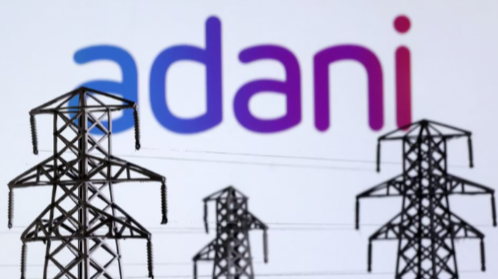TBS
Highlights:
- Adani threatens power cutoff over $496 million unpaid bills
- Bangladesh’s capacity exceeds demand but remains underutilised
- Fuel shortages prevent idle plants from meeting potential output
- Paying undisputed dues could avert Adani supply suspension
- Boosting LNG and coal imports could offset lost power
- Experts urge focus on utilisation, not just capacity expansion
Despite possessing almost twice the electricity generation capacity needed to meet current demand, Bangladesh faces renewed questions about the resilience of its power sector following a threat from India’s Adani Group to halt electricity supply over unpaid bills.
Industry experts suggest that quickly ramping up output from underutilised local plants – enough to offset the potential loss – is far from straightforward.
The Indian conglomerate, which supplied an average of 932.31MW in the 2023-24 fiscal year from its 1,600MW Godda power plant, sent a letter to the Bangladesh Power Development Board (BPDB) threatening a complete power cut from 11 November (tomorrow) if $496 million in outstanding bills were not cleared by the preceding day.
Crucially, the letter asserted that Bangladesh would still be liable for monthly capacity payments – covering fixed costs such as loan servicing, staff salaries, and depreciation –would remain payable even if no power were supplied. BPDB currently pays between $25 million and $28 million in capacity charges each month.
Surplus on paper, shortfall in practice
Bangladesh’s total installed power generation capacity, including captive sources, stands at 31,476MW – nearly double the country’s peak demand of about 16,500MW. Yet, much of this apparent surplus remains idle due to constraints in fuel supply and plant maintenance.
BPDB data from 2 November show that SS Power Banshkhali generated only 560MW during the day’s peak against its installed capacity of 1,320MW. Similarly, the 1,200MW Matarbari plant produced 650MW, Payra (1,320MW) delivered 1,060MW, and Rampal (1,320MW) generated 1,092MW.
Analysts say that fully operating SS Power and Matarbari alone could offset the potential shortfall from Adani’s supply cut.
The Adani episode exposed the vulnerability of surplus generation capacity without ensuring primary fuels – gas, coal, and liquid fuel
Would a supply cut bite hard?
An analysis by The Business Standard, based on power generation capacity, actual local generation, and average imports from Adani, examined how such a supply cut might affect the power supply ecosystem.
Experts say Bangladesh could offset Adani’s supply cut threat by increasing generation from idle plants, but doing so is challenging considering the limited liquefied natural gas (LNG) regasification capacity and challenges in coal imports – when it comes to fund mobilisation.
Officials at the Power Division and BPDB noted that since nearly half of the $496 million dues are undisputed under BPDB’s own calculation, BPDB can avert power cuts by paying the undisputed amount.
To offset Adani’s supply cut, Bangladesh can import additional fuel, which would ultimately push power subsidies higher, given that Bangladesh has to pay capacity payment without any electricity.
Energy expert M Tamim, a former special assistant for power and energy affairs to the chief adviser of the 2008 caretaker government, said Bangladesh could manage the loss of Adani’s supply provided sufficient funds were available to import LNG and coal.
“Many of the mega coal-fired power plants are running below capacity. With adequate coal imports, we can easily raise production,” he said.
Md Zahurul Islam, BPDB’s member (Production), echoed this view. “A vast amount of gas- and coal-fired generation capacity either runs partially or remains idle due to fuel shortages,” he said. “By increasing production from these plants, we can generate an additional 1,500-2,000MW – enough to absorb the shock.”
According to BPDB’s 2023–24 Annual Report, Bangladesh’s installed capacity includes 12,384MW (39.3%) from natural gas and LNG, 7,179MW (22.8%) from coal, 5,885MW (18.7%) from furnace oil, 1,272MW (4%) from diesel, 230MW (0.7%) from hydropower, and 1,224MW (3.9%) from renewables, mainly solar.
Gas-based plants, which account for the largest share of capacity, typically produce only 3,500-4,000MW a day. “Despite LNG limitations, we can raise generation by importing a few additional LNG cargoes,” Zahurul said.
Coal plants operating far below capacity
Coal-fired power stations remain heavily underutilised. BPDB data for FY24 show that Payra Power Plant operated at a 72% plant load factor (PLF), Rampal at 42%, Barapukuria at 36%, and SS Power Banshkhali at 34%.
This means more than half of Bangladesh’s coal-based generation capacity remained untapped due to maintenance issues, import delays, and payment bottlenecks. However, by late 2025, Rampal and Banshkhali reported PLFs above 75% after overdue fuel payments were cleared.
Sector officials estimate that operating Rampal, Payra, and Banshkhali at 80% load could together produce about 3,200MW – more than double Adani’s current supply – more than sufficient to offset any potential deficit.
Broader lessons for power sector
The Adani episode exposed the vulnerability of surplus generation capacity without ensuring primary fuels – gas, coal, and liquid fuel.
Experts argue that the focus should shift from simply adding megawatts to improving megawatt utilisation.
“We built plants faster than we built the systems to use them efficiently,” said M Tamim.
He added, “With the ongoing dispute over the billing process potentially leading to a suspension of power supply from the Adani Power plant, Bangladesh may face a challenge in managing primary fuel amid the liquidity crunch, but not an unmanageable one.”

